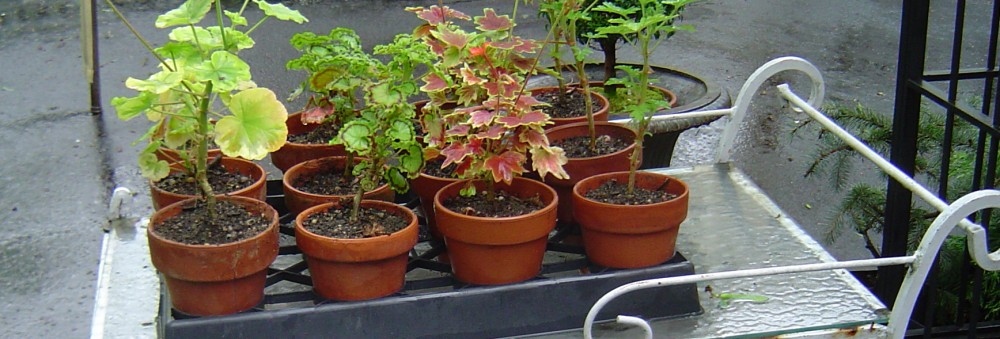Is there any sight more stunning than wisteria in bloom? The pendulous racemes in shades of purple or a pearly white never fail to take the viewers breath away. For the rest of the growing season, the composite leaves provide dense, green backdrops for other, less dramatic but more colorful blooms. Even in winter, the wisteria adds keen interest to the barren landscape, The twists and turns of the denuded gray-brown vine bark are pure calligraphy. Its no wonder then that this hardy plant has been a long time resident of gardens everywhere.
Yet, as in all living beings, perfection is a myth. This beautiful vine can be something of a garden bully. Its vigorous growth has been known to push out other plants and has been positively invasive somewhat frequently. As a result, many gardeners have banished it from their properties. Which is a crying shame.
However, I come bearing some heartening news. Go native! Yes, there is an American variety of wisteria – Wisteria frutescens. While its Asian cousins are the ones we know well, the native wisteria has been sadly overlooked. With the clamor for bigger and better, the ‘foreigners’ won out. I think it is time to bring this surprisingly modest, American stalwart to the forefront.
For the most part, Wisteria frutescens is much like its Asian counterparts. The general appearance is the same and it winds around its supports in a clockwise manner. It is however, not invasive, the pre-bloom seed pods are smooth not furry, and, it is not given to overly exuberant, jungle-like growth. So far so good? Its the racemes that don’t compete quite so well. Atypical to the American stereotype, they are only about half the length of the Chinese or Japanese wisteria. Yes, it is not bigger! But, that does not mean it is not better. Given all the other attributes, in my opinion, this is the wisteria to plant in our gardens. And wait, let me sweeten the deal – it blooms twice. Once in late spring ( well after the Asian varieties) and again in summer when it is in full leaf. I love that.
A few years ago, I planted a pair of W. frutescens so they could scramble up the metal gazebo and form a natural canopy. They have faithfully bloomed from year one and are now quite fetchingly sprawled over the gazebo. At this point, I’m not sure if the gazebo is supporting the vine. Looks like its the other way around.
I prefer the late blooming nature of W. frutescens. In early spring there are plenty of bulbs and other early blooming perennials in flower. But, later in the season, just as the big drama is easing up, it is very nice to have this wisteria add extra oomph to the garden.
The Asian variety that I have elsewhere in the garden is cantankerous, far too vigorous and has not bloomed since the first year. I have had horticultural experts look at it and nobody can figure out why it does not reward me with fabulous flowers. Needless to say, its days with me are numbered.
If you have a non-native wisteria and you are well-satisfied with it, keep it!
Wisteria is genuinely one of my favorite vines. It offers something all through the year. A true four season winner. The twisting, rope like vines are strikingly sculptural in winter. In leaf, the wisteria is the answer to a stunning canopy. But of course, the wisteria flowers are the show stoppers. In our climate, wisteria require full sun, strong support and space for good air circulation. Keep protected in windy areas. Young plants need to be well fertilized and watered. Once established, they do not need to be pampered. There are some straightforward pruning techniques that enable good flowering.
How to prune wisteria to make it bloom (keep in mind my own failure with the one delinquent):
In February, select a few strong side shoots to train horizontally and cut all remaining shoots back to two buds from old wood. Repeat this process to extend the spread of wisteria. New side shoots will grow from the horizontal stems and these side shoots should in turn be cut back to two buds in February.
After flowering, side shoots will start growing out and can be cut back close to main stem. Do this two to three times in summer. If you fail to do this, then your work in February will be intimidating! Occasionally, this practice stimulates a second flowering.
Sometimes, failure to flower can be due to the flower buds succumbing to the intense cold. This would then indicate a need for some protection in the future.
Go forth and plant W. frutescens in your garden this year. Just make sure you provide it the sturdy support it needs.
Enjoy the photos of my W. frutescens:








Note: I have added a new page ‘The Vertical Garden’. Do check it out.
(c) 2014 Shobha Vanchiswar
[do_widget “Blog Subscriptions (Jetpack)”]


I had a wonderful and large vine of Wisteria frutescens growing in my old yard with copious lilac trees. You cannot imagine the aroma during springtime. OH- how I miss them!!!!!!!!!!!! We tried to do the same here, but mistakenly planted a Trumpet Vine by the cabana. It is wonderful and covers the area well. One problem, no aroma in the spring.